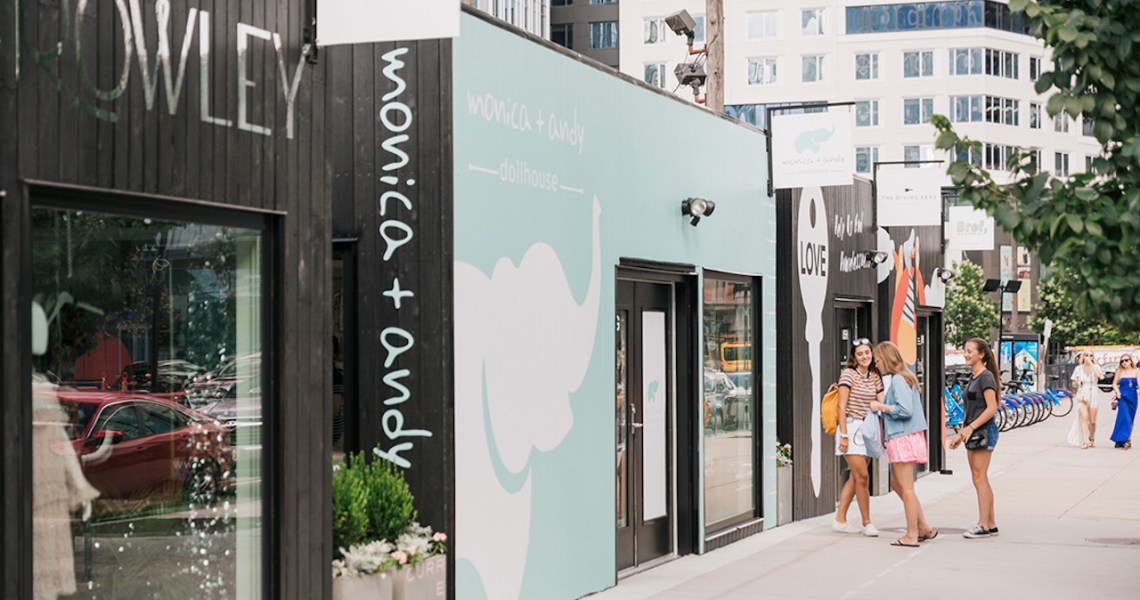Consumers have been experimenting with ways to safely return to some semblance of normalcy. This is set to expedite the transition from indoor malls to outdoor shopping centers, a shift that was in the works even before Covid-19 began.
“Open-air malls provide a safe space for people to congregate,” said Stenn Parton, chief retail officer at developer DJM, which manages open-air malls in Southern California and Texas. “The future of outdoor malls is very bright.”
According to research from the data firm Placer.ai, outdoor shopping centers, during the week of June 8, visits to outdoor centers were down 34% year-over-year, while visits to indoor centers were down 42%.
Traditional malls were already experiencing a decline in popularity as people flocked to mixed-use hybrid shopping and entertainment centers, which often include an emphasis on outdoor space. This has been fueled in recent years by more department stores and traditional mall chains closing or declaring bankruptcy, such as Neiman Marcus, J. Crew, Brooks Brothers and JCPenney.
“[Many] malls were built in the ’80s. The world has evolved quite significantly since then,” said Todd Norley, vp of retail leasing for WS Development, which owns and operates Boston Seaport.
This trend has been chronicled in a barrage of articles in recent years heralding the “death of the mall,” as department stores have struggled financially and consumers have shifted to rely on e-commerce. In 2017, Credit Suisse issued a report that predicted that 25% of U.S. Malls would close by 2022, and that was well before the pandemic forced even hesitant consumers to buy online.
Lockdowns and subsequent new safety protocols have accelerated this trend.
Many enclosed malls around the country either have not yet reopened or have shuttered. In New York City, Gov. Andrew Cuomo nixed plans to let indoor malls reopen when the city entered into Phase 4 of reopening last month. Just last week Neiman Marcus announced that it would vacate its Hudson Yards location, opened in March 2019, while closing three other U.S. stores.
All signs point to the new normal being about lessening risk by taking precautions like wearing masks, socially distancing and spending as much time out of doors as possible. That’s set to be a boon to outdoor shopping destinations. That’s not to mention that curbside pickup is easier to pull off at outdoor malls.
According to the retail data firm Coresight Research, the outlook for retail is grim. A June 2020 study estimated that U.S. retail will see 20,000-25,000 closures in 2020, a significant increase from the company’s previous estimation of 15,000 in the early days of the lockdown. Of those closures, Coreseight Research “anticipate[s] that 50-60% will be mall-based” and expects that this could “prompt an overdue rationalization of mall space.”
Already, some indoor malls are converting to fulfillment centers, offices and open air offerings. Westfield Valley Fair in San Jose, CA just unveiled a new open-air pop-up market, which will run until the middle of August.
“In the wake of this, many landlords will have the choice of sitting on vacancies and hoping the market will come back, or assuming this change is forever and that now is the time to evolve,” Parton said. “This is a good time to create more public space, and bring in office space, housing and hospitality.”
Parton, Norley and Stephen Yalof of Tanger Outlets, all developers focused on outdoor malls, cited less of a dropoff in foot traffic than anticipated after their developments reopened in recent months.
“After quarantine, people are desperate for community, which is one of the beauties of these outdoor malls where people are able to socially distance,” Parton said. “People are able to get out of isolation and be part of the community, without being together in a confined space.”




